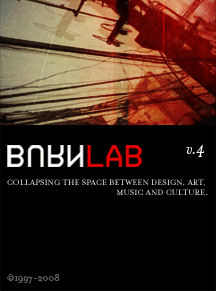More on Blade Runner, Cyberpunk and the influence of Heavy Metal and Moebius
I had heard William Gibson speak about his initial distraught over Blade Runner beating him to the punch before, but digging around today I found this great quote - from the same interview as the earlier post:
"About ten minutes into Blade Runner, I reeled out of the theater in complete despair over its visual brilliance and its similarity to the "look" of Neuromancer, my [then] largely unwritten first novel. Not only had I been beaten to the semiotic punch, but this damned movie looked better than the images in my head! With time, as I got over that, I started to take a certain delight in the way the film began to affect the way the world looked. Club fashions, at first, then rock videos, finally even architecture. Amazing! A science fiction movie affecting reality!"
Well [now we can say] of course. Cyberpunk was and continues to be an extraordinary type of genre which transcends art, music, fashion, cinema and literature because it is relevant as long as technology moves faster than humans can cope with. The notion of a dystopian society can become a tiring old subject at times, but our political and corporate leaders manage to find new depths which would have seemed cartoonish in the 1970s. The general derth of imagination in Cyberpunk-influenced music, film and style after the mid-90s shouldn't detract from the fact that these concepts are fundamentally still quite valid and fertile. The hugely popular and hugely derivative Matrix trilogy pops to mind as an example of both the genres' relevance and often unfortunate staleness of execution.
There are plenty of artists approaching these ideas from fresh perspectives however. One such pair of artists, ADULT. have been dealing with the more intimate, psychological effects of a technology-driven society for the past eight years, and architects such as Lebbeus Woods have taken Cyberpunk concepts into uncharted socio-political realms of design that have influenced the design of genre-defining films, bringing things oddly full-circle.
One stand-out of the late 1990s was Luc Besson's The Fifth Element. If the film seemed to be a near literal translation of Moebius' The Long Tomorrow and his work for Heavy Metal Magazine, it is because Moebius himself was engaged as a design consultant for the film. Loosely based on Harry Canyon from the 1981 animated film Heavy Metal, The Fifth Element brought the French quirkiness and sense of humor to life, sometimes lost in the American derivations.
Two Americans who have no deficit when it comes to humor, ADULT. will be wrapping up their current tour at Detroit's Magic Stick this Friday. Don't expect any cliches about replicants, but if you're in the mood for "that quintessentially postmodern cocktail of ecstasy and dread," you're looking in the right place.
Monday, October 16, 2006
Posted by:
Unknown
at
10/16/2006 10:36:00 PM
![]()
Subscribe to:
Post Comments (Atom)

No comments:
Post a Comment